Should you work out with DOMS?
If you’ve ever worked out before, you have probably experienced the pleasure of delayed onset muscle soreness.
Why do your muscles get sore after a workout? Is soreness a good thing? A bad thing?
Should you continue working out if you’re sore?
Today, you are going to learn all about DOMS, and what to do to treat it.
Let’s get started.
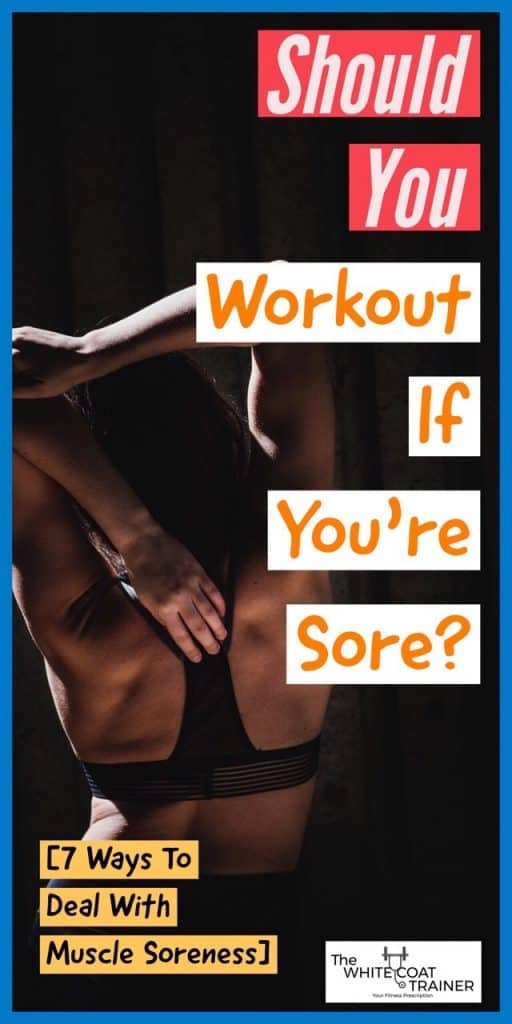
Why Do I Feel Sore After Exercising? (Especially on The First Day)
Believe it or not, we do not fully understand why soreness happens.
What we do know is that it can affect your ability to perform activities of daily living.
Raise your hand if you ever struggled to sit down or go up/down stairs after a squat day!
The medical terminology for soreness is DOMS, or delayed onset muscle soreness.
Some people think soreness is caused by metabolic stress that naturally happens after you repeatedly stimulate your muscles. Others think that it is simply related to local inflammation caused in the exercised muscles.
Either way, muscle soreness is not enjoyable.
So, what does it mean?
Are Sore Muscles A Good Sign? Does It Mean I Got A Good Workout?
No. Muscle soreness is not an indicator of a good workout.
The only thing that soreness tells us is that you did a physical activity that your body was not used to doing in a while.
Your goal should not be to get sore after a workout. It will happen if you haven’t exercised in a while, or if you do a brand new exercise, you will probably get sore.
With that said, we know that certain exercises can make DOMS worse.
Let’s go over them.
What Types Of Activities Are More Likely To Cause DOMS?
Any exercise that has a long or pronounced eccentric (aka negative) component will generally increase the rate of soreness.
The most common examples include
Squats, Romanian deadlifts, Bench press, and even Bicep curls.
You could also purposefully slow down the eccentric component of any exercise to cause higher muscle soreness potential.
But like I said before, you should not purposefully do this unless your goal is to cause a lot of metabolic damage to your muscle. (This can be useful if your goal is hypertrophy).
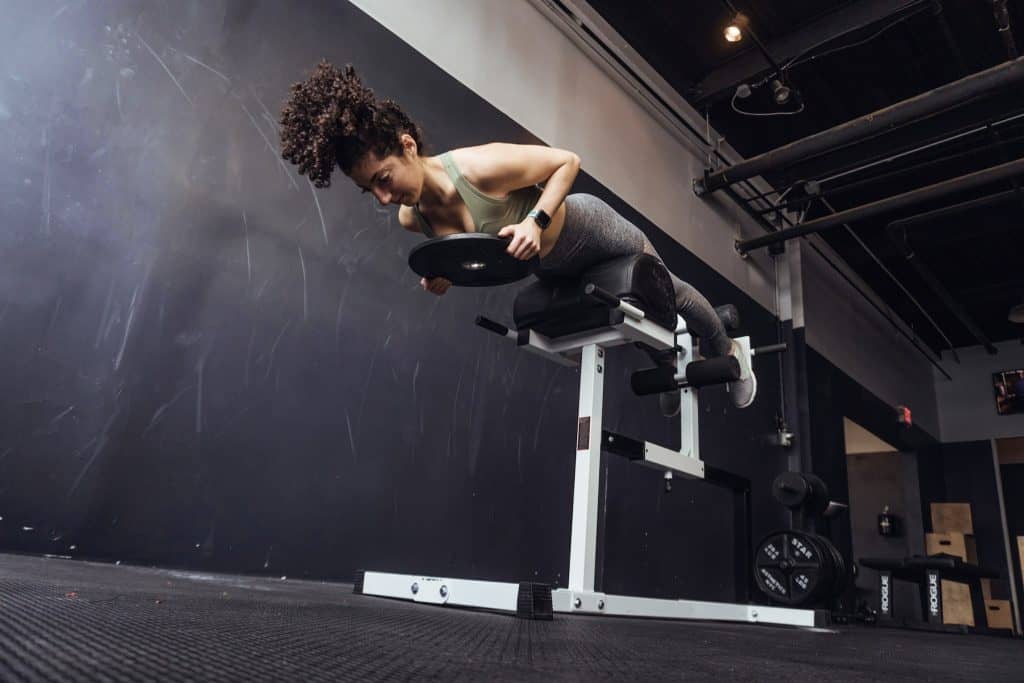
DOMS Timing: When Do Soreness Levels Peak?
DOMS usually begins anywhere from 12-24 hours from the activity that causes it.
This is why it is known as delayed-onset.
The actual peak (or highest) level of soreness will occur in 24-48 hours. For some, it might take a little longer.
How Long Does DOMS Last?
The rate of recovery from muscle soreness is highly variable. For some, it may only last 1-2 days and for others, it can last up to a week.
The variability depends on how intense your workout session was, how much volume you did, and your baseline level of fitness.
There are some things you can do that might help increase your chances of recovering from DOMS, although the data has not been promising.
More on that later.
The biggest question you might have is:
“My muscles are really sore after I workout, should i continue?”
Should I Workout With DOMS?
One of the most important things you need to understand is that it is OK to exercise while you are still sore.
This is provided you have waited ~48 hours from the last time you trained that particular exercise (or a close variation to it).
Getting back to the gym is probably the single best thing you can do for soreness.
With that said, it is important that you do not do too much too soon.
Listen to your body, and get back to practicing the exercises through a full range of motion as soon as you can, even if your soreness has not improved completely.
If you wait until your soreness is gone, you may never give your body the opportunity to improve its baseline level of fitness.
Can Muscle Soreness Be Prevented?
DOMS cannot be prevented. If you are not “prepared” to do that specific exercise activity, you will likely get sore.
Regardless of your experience, any novel exercise has the potential to bring on unwanted pain.
Doing a dedicated warm-up routine prior to exercising, followed by a quick cool down after your workout might help, but research hasn’t been conclusive.
Section Recap
- Delayed Onset Muscle Soreness is almost inevitable if you are not accustomed to doing that specific exercise activity
- We do not know why it happens, but it is not necessarily a good thing or a bad thing
- DOMS usually occurs within 24 hours from the exercise activity, and can last up to a week
- You can continue exercising despite being sore
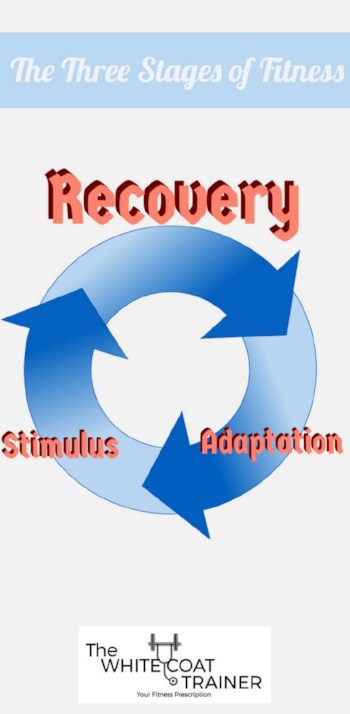
Remedies For Soreness: How Can I Treat DOMS?
I want to start with a caveat.
As of right now, there are no fully proven methods to treat DOMS. The only thing that has been proven to fix soreness time and time again is… time.
With that said, there are a few things that you can do to help boost your recovery from your workout, and potentially shorten the time to recover from muscle soreness.
7 Simple Strategies To Relieve Sore Muscles After A Workout
If you exercise, and completely ignore muscle recovery, then you are wasting your time.
To quote some great fitness experts, “It’s not what you do inside the gym, but what you do outside of the gym that will determine your success.”
With that said, I want to tell you that this is not a quick fix- there is no way to relieve sore muscles “fast.”
Instead, I am going to focus on the best strategies to aid in your recovery and potentially improve your muscle soreness.
The first three are strategies that you must do.
The last four are strategies that have the potential to help you but have not been clinically proven. Experiment and see what works best for you.
1) Strategy #1 Use Passive Recovery To Your Advantage
Passive recovery is by far the most important thing you can do to restore your body. This is simply letting your body heal as you rest from physical activity.
However, it is important to not misinterpret this.
Passive recovery does not mean for you to just sit back, watch tv, and let the cows come home!
It is important to give your body the necessary environment to recover- this means paying close attention to your sleep.
Sleep is the equalizer.
It will contribute to at least 33% of your entire fitness progress.
Sleep deprivation can lead to poor exercise performance, increased risk of injury, and an inability to recover from muscle soreness.
If you get nothing else from this, understand that insomnia can worsen DOMS.
Look, I get it.
Sleep isn’t the easiest thing to get a lot of these days. Especially not as a busy professional.
However, the most important thing that you can do is to improve your sleep consistency.
Here are four simple tips to get started:
- Do your best to go to bed at the same time every day
- Do your best to wake up at the same time every day, even on off days
- Create a pre-sleep routine, to get your body accustomed to winding down
- Do your best to minimize alcohol and caffeine intake, especially later in the day
Also, remember when I said you shouldn’t do too much too soon?
It is important that you do not overdo it at the gym.
Fitness is not all or nothing. Ensure that you are not training above and beyond what your body can reasonably recover from. I.e:
- Don’t workout 7 days a week.
- Don’t train the bench press (or any other main compound lift) 4 times a week
- Don’t go to the gym for 2 hours a day
Your workout should not take more than 30-45 minutes a day.
If you do too much, you risk developing severe DOMS.
That brings us to the second strategy.
2) Strategy #2 Maximize Post Workout Nutrition and Hydration
The next thing that you need to do is to maximize your post-workout nutrition.
This means eating the right foods at the right time. So what do you need to consume post workout?
You need to consume a sufficient amount of Protein, Carbohydrates, and Water.
It is absolutely necessary to consume protein and carbohydrates following your training to help replenish the glycogen stores in your body and begin the process of muscle protein synthesis.
It is often debated what the optimal post-workout nutrition window is. There is no hard and fast evidence, but to be safe, consume this meal within 45 min -1 hour of your workout.
Aim for ~30 grams of protein post workout.
Here are the best workout recovery foods in the protein category
- Protein powder (whey or plant-based) Just make sure the brand is reputable
- Lean chicken breast or Grass Fed Beef
- Wild Caught Salmon and other high-quality Fish
- Legumes (Chickpeas, Green Split Peas)
- Tofu
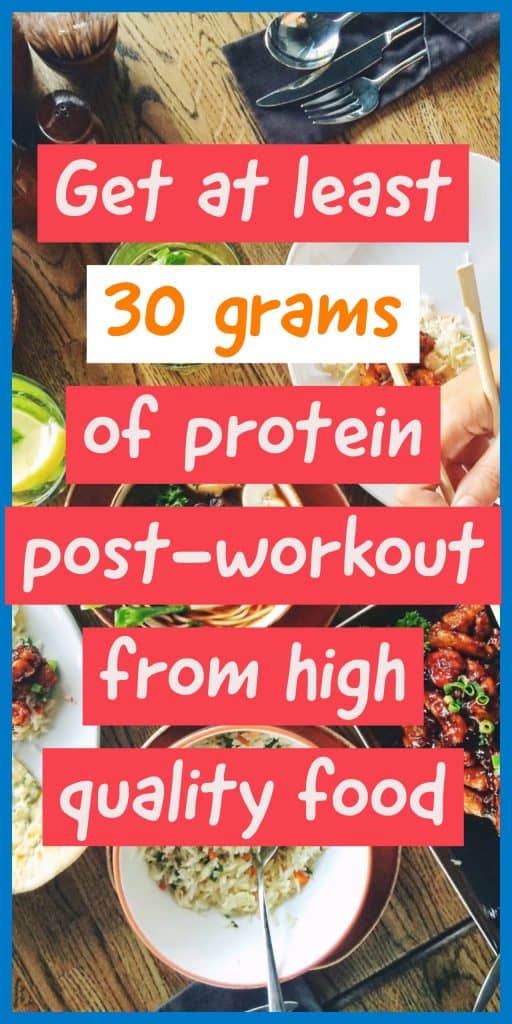
What about Carbs?
The post workout window is your chance to eat free carbohydrates.
Your body is starving for energy and it will quickly use up the calories from carbohydrates to rebuild itself immediately following a workout.
This is why exercise is so important for Diabetics. During exercise, the body up-regulates carbohydrate receptors, which results in lower than normal blood sugar spikes.
The more you work out, the more free carbohydrates you can consume.
So how many carbs should you consume post workout?
The more aerobic your workout was (think fast HR, and heavy breathing) the more carbohydrates you can consume.
Aim for 50-100 grams of Carbs depending on your size and activity level.
Here are the best workout recovery foods in the carb category
- Brown Rice
- Quinoa
- Other Whole Grains
- Oats
- Sweet Potatoes
- Fruits
- Vegetables
I personally consume upwards of 800 calories post workout to help replenish my reserves.
Are There Any Good Supplements For Muscle Recovery and Soreness?
I prefer that you keep supplements to an absolute minimum.
Whey or Plant-based protein powders (with minimal ingredients) are going to be the main muscle recovery supplement that you may need.
Protein powders are simply a convenience. They aren’t absolutely necessary.
If you can maximize your protein intake post workout with natural food, then protein powder is just a commodity.
There has been a lot of mixed research on supplements like Branch Chain Amino Acids (BCAAs), Glutamine, L-Carnitine, and I don’t know what else.
In my honest opinion, all of these supplements are crap and just a waste of your money.
If you focus on quality nutrition, you will be more than fine.
Hydration And Recovery
Lastly, you must consume an adequate amount of water on a daily basis.
If you do not drink water, you will die.
Plain and simple.
Staying hydrated is what will allow the nutrients in your body to circulate and do what they must to help your muscles recover.
Aim to drink approximately half your body weight in lbs every single day. (I.e if you weigh 150 lbs, you should consume 75 oz of water).
Water is absolutely necessary to help flush out metabolites that are created from strenuous exercise.
Here are three quick strategies to get you started.
- Consume 16 ounces of water immediately upon waking up
- Consume 16 ounces of water immediately post workout.
- Consume 8 ounces of water with every single meal
Don’t sleep on hydration.
It’s one of the most important things you can do for your health.
If you are ever thirsty throughout the day, then you have waited far too long.
Check out The Fastest Way To Rehydrate Your Body and Improve Your Fitness To Learn More
This brings us to the third and final point.
3) Strategy #3 Active Recovery
The third most important strategy is active recovery.
Active Recovery is exactly what it sounds like. Rather than waiting for your body to repair itself, you continue to remain active on the days you are not training.
This includes walking, swimming, using a stationary bike, stretching, and even self-massage with foam rollers etc. (This is the one I use)
It is important that the stress during active recovery is of low intensity so that it won’t interfere with the actual repairs that are happening.
Low intensity could be defined as an activity that requires minimal effort and does not cause a significant increase in your heart rate.
Why Would You Use Active Recovery?
Active recovery is meant to help your muscles recover by improving their circulation.
More blood flow to your muscles means a huge influx of oxygen and nutrients which allows for a higher outflow of metabolic waste products.
My absolute favorite method of Active Recovery and the one that we recommend to you is walking.
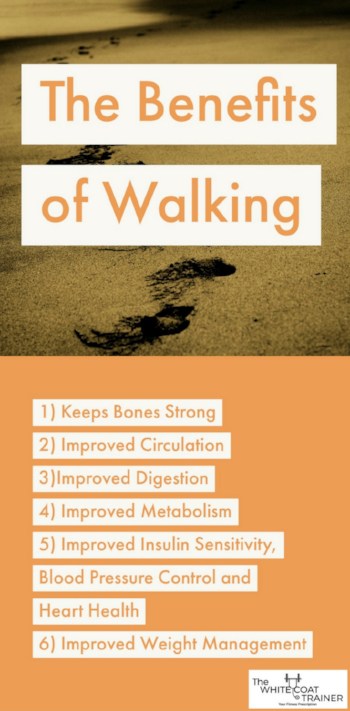
Brittany and I do our best to take 10,000 steps or more on our rest days and at least 7500 on our training days.
The more you move, the more energy your body creates.
DO NOT underestimate walking.
This is one key strategy you can use to de-stress and recharge from a tough day at work.
The return on investment is disproportionate.
If you need ways to increase your step count, check out The Detrimental Effects Of Prolonged Sitting [And 8 Ways To Combat It].
As a busy professional, it should be easy to include more walking into your routine.
Get creative, do not dismiss this.
Section Recap
- Time is the only proven thing that will fix muscle soreness
- You must still focus on improving your post workout recovery to help your body restore your muscles
- Start by optimizing your sleep, post-workout nutrition, and engage is active recovery on a daily basis
DOMS Treatment Strategies #4,5,6 & 7
There are a few other things you can do to improve your exercise recovery, however, they are nowhere near as important as the three we just mentioned.
You can use these strategies if and only if you have your sleep and nutrition under control.
These include:
4) Contrast Showers
A contrast shower is when you alternate between hot water and (ice) cold water while you are showering.
By changing the temperature of the water, you are causing your blood vessels to vasoconstrict and vasodilate, promoting oxygen and nutrient transportation to your muscles.
As we have discussed before, allowing your body to repair any muscle damage that was done is probably the key strategy
Studies have shown that cold water can decrease inflammation and soreness.
5) Massage
Similar to foam rolling, massage can help promote relaxation and get rid of muscular “knots.” I personally love massage but keep in mind, this is only supplemental. A lot of studies done on massage therapy for muscle soreness have shown potential benefit.
On the flip-side, massages can get quite expensive unless your significant other happens to be a good masseuse.
With that said, massage makes everyone feel better, and the placebo effect is real!
6) Stretching
Stretching is not actually necessary for muscle recovery and is often overused by the general population.
However, the way that it can help with muscle soreness is by helping to restore the normal range of motion of your sore muscle.
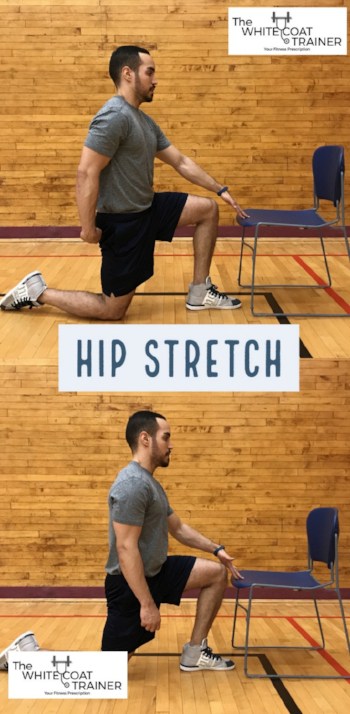
Soreness is often associated with muscle contracture and decreased ROM, so doing some gentle stretching can help you.
But understand that stretching by itself will not help with recovery or soreness.
7) Electrical Stimulation
Electrical stimulation devices aim to cause repeated contractions in the muscle it is attached to, resulting in increased blood flow to the area.
Again, blood flow is what will allow oxygen and nutrients to flood your muscles and help to eliminate waste products and metabolites.
In theory, this can lead to decreased soreness and improved recovery, but clinical trials have not proven this effect.
Personally, I find that whenever I use these devices, I get more relaxed, which is great for recovery and restoration.
What Happens If You Don’t Maximize Exercise Recovery?
Exercise is a catabolic process. This means that your muscles have to break down and use up their resources extensively, in order to perform the physical activity.
The harder you exercise, the higher the catabolic demand on your muscles.
Whether you get sore or not, you need to pay attention to your recovery.
If you only exercised and didn’t recover, you would actually just waste away.
Optimizing your recovery is what will allow your body to go into anabolism or a state of rebuilding and repairing.
This is how your muscles get stronger, your body becomes more “fit,”
After all, that is the goal right?
If you ignore your recovery, then you are not optimizing your fitness, and you could very well be wasting your time.
Best Case Scenario: You do not achieve your fitness goals
Worst Case Scenario: You wind up injured, burned out and unmotivated.
3 Common Myths Regarding Muscle Soreness
In this next section, I want to go over some common myths regarding muscle soreness.
Myth#1 DOMS is good – It indicated you had a good workout:
You might think that you didn’t have a good workout if you are not sore.
This couldn’t be further from the truth.
You should not chase soreness. It is an automatic byproduct of training untrained or unconditioned muscles.
Start slow, don’t overdo it, and maximize your recovery from each workout session.
Myth#2 DOMS only happens to newbies:
DOMS can happen to anyone. If you are a newbie, you are more likely to get sore since your body and muscles are not used to exercising.
Even the most trained athletes will get sore provided that they have taken a few days off from working out, or they perform a brand new exercise that they haven’t done before.
If I don’t exercise in 4 days or more, I will get sore, regardless of the exercise.
Myth #3 DOMS is a bad thing:
DOMS is not a good thing nor a bad thing. It is neutral.
With that said, it is important to identify if your muscle soreness is appropriate, or if it’s too much.
How much pain is too much?
DOMS leads to a decreased range of motion and pain. This is expected.
However, you have to make a judgment call. If you feel excessive fatigue, excessive pain, or even a fever, then you may want to get checked out.
What About Rhabdomyolysis?
Some people think that DOMS is simply a mild form of a condition known as rhabdomyolysis or rhabdo for short.
Rhabdo occurs when you have excessive muscle breakdown, and these muscle proteins concentrate in the blood and can prevent your kidneys from filtering waste appropriately.
Rhabdo is a serious medical condition that requires emergent treatment ASAP.
Common signs and symptoms include fatigue, dark-colored urine, pain, fevers, and confusion.
If you think you have rhabdo, seek care immediately.
Section Recap:
- Massage, stretching, and other common recovery practices may not have any significant effect of muscle soreness
The Bottom Line on Muscle Soreness
Muscle soreness is an inevitable component of exercising.
It should not deter you from working out, or from continuing your exercise program.
The one thing that you must ensure is that you are recovering appropriately from your workouts.
If you want to realize your optimal fitness aptitude, then you should utilize both active and passive recovery methods, but make sure that you don’t skimp on the passive stuff.
Without proper recovery, there is no progress.
To Recap:
- Soreness is not inherently good nor bad
- It can take approximately 48 hours to recover from a workout, whereas muscle soreness can take longer to improve
- You can decrease muscle soreness by being more consistent – it is ok to workout while sore
- Use active recovery to help the repair process – especially walking
- Passive methods include proper post-workout nutrition, adequate nutrient intake, and sleep
Speaking Of Adequate Nutrition
Be sure to check out The WCT Compound Diet. It is the first diet that takes a step-wise approach to healthy eating.
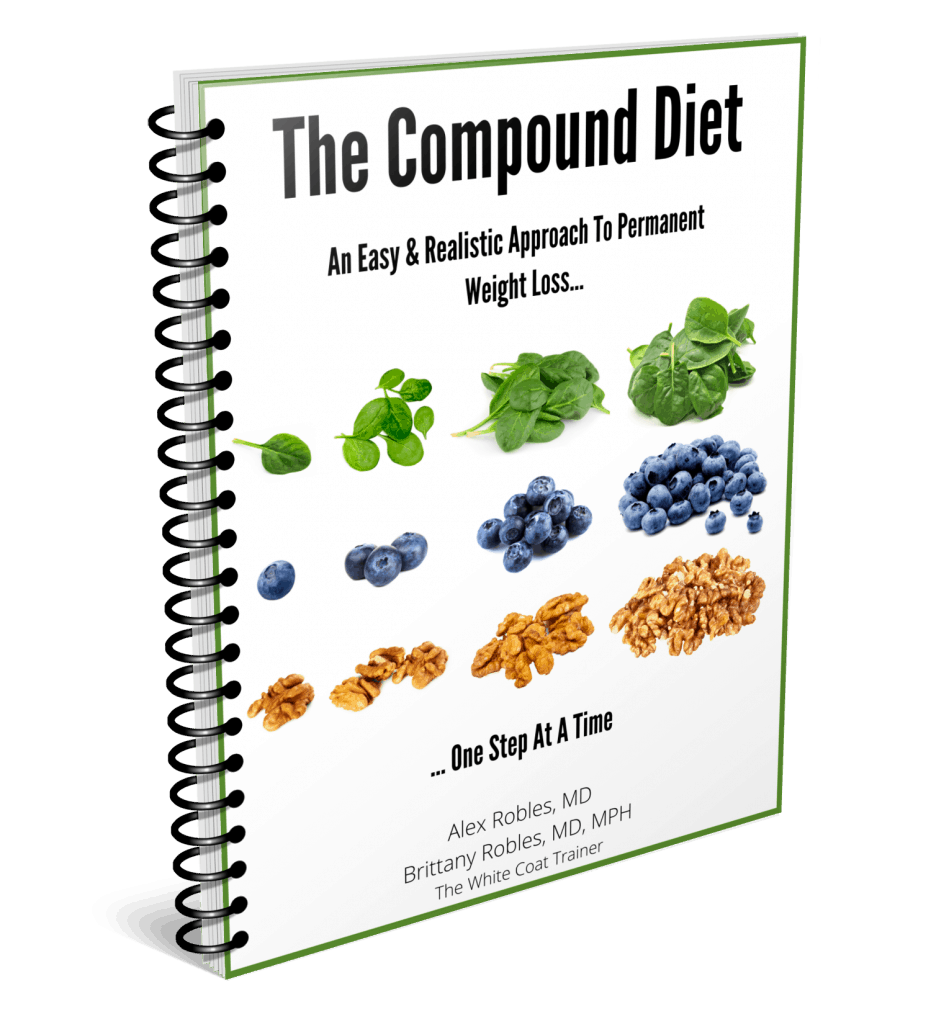
That way, you can incorporate healthy habits into your busy life one at a time.
Next, you should learn:
- The 9 Most Effective Stretches To Improve Your Flexibility
- How Much Water You Should Drink To Stay Optimally Hydrated
- Why You Should Incorporate Walking For Weight Loss and Fitness
Now we turn it over to you
What are your go-to post-workout recovery strategies?
Comment below and let us know.

Alex Robles, MD, CPT / Brittany Robles, MD, MPH, CPT
Alex & Brittany Robles are physicians, NASM Certified Personal Trainers, and founders of The White Coat Trainer: a resource dedicated to improving the health and fitness of busy professionals using time-efficient strategies. Their advice has been featured in My Fitness Pal, Prevention, Livestrong, Reader’s Digest, Bustle, The Active Times, and more. Learn more about them here.

Great tips. This was so informative.
Thank you. Im glad you got something useful from it!
There’s not much evidence that warming up will be effective in preventing DOMS. But exercising with warmed-up muscles will reduce your chance of injury and improve your performance.